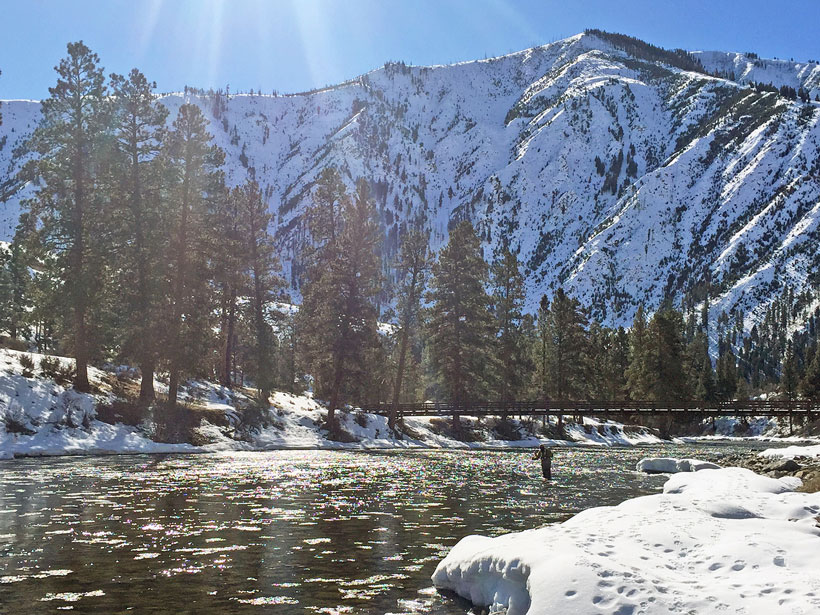Models of what global climate will look like in 10, 50, and 100 years get more sophisticated every year. But what will climate change mean for water resources in regional communities? A group of researchers is building tools to help scientists and regional water managers answer that question.
“We’ve been developing new models and new techniques…to refine our understanding of the uncertainty in projections going forward—for hydrology, for snowpack, for important water resources, for flood extremes,” said Andy Wood, a hydrometeorologist at the National Center for Atmospheric Research (NCAR) in Boulder, Colo. Wood is the principal investigator of the project.
“We’re creating a large set of projections that go forward and tell us about future water security,” he said.
Scaling Down in Area, Scaling Up in Relevance
“If you have a certain amount of rainfall,” Wood explained, “you’re expected to produce a certain amount of runoff and streamflow. Historically, this is the basis for a lot of predictions.” Water resources managers use those predictions, for example, to prepare for reservoir overflow, drought conditions, and flood risks.
“But it appears that with [global] warming, some of these relationships are changing. We’re getting, for instance, less runoff out of the same amounts of rainfall. This is a huge concern,” Wood said.
Global climate models just aren’t designed to make watershed-scale predictions.
Global climate models just aren’t designed to make watershed-scale predictions, NCAR project scientist Julie Vano told Eos. “A lot of the global climate models that are run across the globe are very computationally intense, but that output is at maybe 200 kilometers by 200 kilometers in a single grid,” she explained. “That sort of information isn’t something that a water manager could really use because they work at scales that are like tens of kilometers.”
What’s more, Wood said, the outputs from climate projections often don’t match what hydrology models are trained to expect—it’s like trying to fit a square peg into a round hole. Climate projections can also give wildly inaccurate forecasts when pushed beyond their spatial resolution.
For example, in the climate model, “it might drizzle all the time instead of having actual storms. It might have a 10° temperature bias too warm or too cold just because it’s representing this really large domain,” Wood said.
The team gets climate and hydrology to speak to each other using NASA’s Land Information System (LIS). LIS helps shrink large-scale climate models down to watershed-scale weather patterns and then to local hydrology in a process called downscaling. “Once we have that, we can run the hydrology models out a hundred years and project streamflow,” Wood said.
This animation shows the conditions of U.S. rivers from 1 January to 1 June 2019 relative to the rivers’ historic daily record. Data are from stream gauges and government-issued flood stage levels. Credit: Aaron Briggs, Megan Hines, Lindsay Platt, Jordan Read, and Marty Wernimont/U.S. Geological Survey
Water Managers Facing Uncertainties
However, it’s not enough for water managers simply to have access to the projections for their regions, the team argues. Community water managers should understand how to glean the information they need from the models and understand the forecasts’ underlying uncertainties.
“[When] taking information at one scale and translating it to another scale,” Vano said, “you have to make a lot of decisions. And there’s a fair amount of uncertainty in how you do it. Exploring the uncertainty and how you decide how to downscale that information is a big question.”
The researchers have been working with water managers since the project’s inception to understand what information and tools the managers need to do their jobs.
“The outcomes of this project are going to raise the standard of capabilities that can be used for water security in the West and throughout the country.”
“Often, downscaling gives you output like, ‘how much is it going to rain,’ ‘how much is it going to snow,’ and ‘what are the temperatures like?’” Vano said. “But it doesn’t give you the kind of things that water managers might care about, like, ‘how much water is in my stream,’ ‘how large is my snowpack,’ or ‘what is the soil moisture like?’”
“We’re working to build the technology, connect all of the models,” she said. “But alongside that, we’re also building the capacity to share the context with the applications community. These are moving forward together. Each effort informs the other.”
The project is about a year away from completion, Wood said, but the team has started rolling out some of its preliminary models and interactive data sets. It also has compiled a list of dos and don’ts to guide water managers in using the hydrology projections.
“I think the outcomes of this project are going to raise the standard of capabilities that can be used for water security in the West and throughout the country,” he said.
—Kimberly M. S. Cartier (@AstroKimCartier), Staff Writer
Citation:
Cartier, K. M. S. (2019), Bringing climate projections down to size for water managers, Eos, 100, https://doi.org/10.1029/2019EO129291. Published on 26 July 2019.
Text © 2019. AGU. CC BY-NC-ND 3.0
Except where otherwise noted, images are subject to copyright. Any reuse without express permission from the copyright owner is prohibited.

